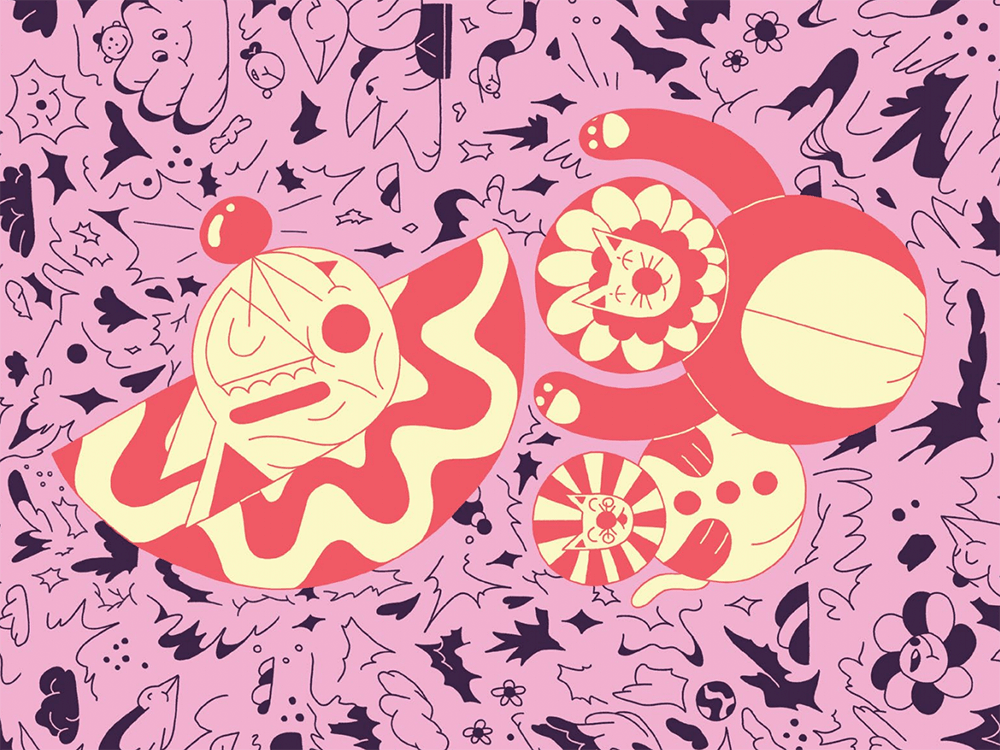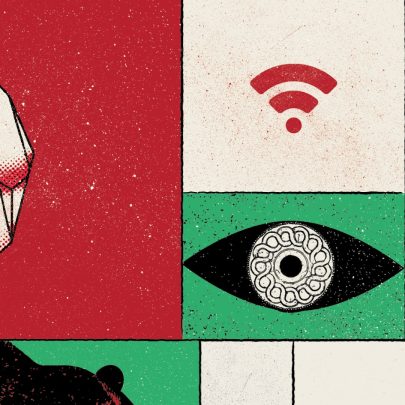Feb 4, 2021 Society
In our latest How to be Good column, Ashleigh Young tries to save birds’ lives with style.
Six months ago, my cat brought in a young sparrow. I recognised the sparrow immediately. It was the same one he had brought in just the day before. I’d thought I had saved that sparrow’s life. I’d scooped it up, and it chirruped and flapped and looked like it might be okay, so I locked Jerry inside and carried the bird deep into the scrub below my flat and released it into a small, seemingly hidden nook. It had flapped away energetically. Now, here it was again. Both our nightmares, playing out again.
“Dammit, Jerry,” I yelled. I scooped up the bird. It barely moved. As I carried it outside, it died in my hand. I have never felt anything like it: that tiny life fading away. That was when I knew I had to recommit to the Birdsbesafe collar. “That’s right,” I said to Jerry, now lolling like a failed pavlova on the floor, “you brought this on yourself.” But I had brought it on him, too; I was the one who let him roam freely outdoors. The times I’d tried to keep him consistently indoors during the day, he’d go so stir-crazy he would develop a urinary blockage. It was time to put him back in costume.
The Birdsbesafe collar is a brightly coloured ruff , both regal and clown-like, designed to alert birds, especially songbirds, whose eyes are especially sensitive to bright colours. Birds are apparently more likely to notice a clowned-up cat from a distance, so will have enough time to fly away. But the collars seem to alert reptiles, too. Field studies in North America, Australia, and the UK have found that they make a diff erence, with a reduction of at least 50% in birds and reptiles caught, and in a 2019 study, a reduction of 78% birds.
They’re said to be more reliable than the old bell-on-the-collar trick, which cats can sabotage with some especially judicious creeping. I first tried the collars in 2016, as part of a short Wellington-wide study, and after the study had finished, I kept Jerry in the collar for a few months. He brought no birds or lizards home. But he kept losing the collars — he’d go out in full regalia, then come home naked. I wondered, darkly, if someone in the neighbourhood was stealing the collars, and entertained the idea of fitting Jerry with a Go-Pro so that I could catch the culprit. The collars were making me paranoid. And broke. Birdsbesafe is a US company, and ordering a pack of three ruff s and the safety breakaway collars that go inside them, plus postage, is over US$100. After Jerry lost one collar too many, I gave up. The lost-collars issue was one of the reasons why the 2016 Wellington study was ultimately inconclusive, lead researcher Heidy Kikillus tells me (though there was anecdotal success).
Still, after the sparrow incident, I was determined. I ordered more collars. Each morning, I fussed to get the collar on properly while he waited — he seemed almost to enjoy this ritual — then he would trot out the door cheerily like a kid off to clown school. He wore the collar well. I would glimpse him around the garden, sprouting up like a weird flower. He reminded me of an Anne Geddes baby. I read that to other cats he might look more formidable, which would discourage fighting, so I hoped the collar would give him an advantage in stand-off s with Kevin, the tallest cat in the neighbourhood.
I was about to move to a new suburb, though. It was nestled right up close to Zealandia, where more than 40 different native bird species have been recorded. This was high-risk. I kept thinking of the horror story of the lone cat that decimated a colony of banded dotterels in Eastbourne, wiping out all of the eggs and chicks — two years in a row — and how conservationists were powerless to make the cat’s owner do anything about it. I thought of the small, drab, but iconic Lyall’s wren, said to have been both discovered and exterminated by a lighthouse keeper’s cat. Forest and Bird estimates that New Zealand’s domestic cats kill more than one million native birds each year. (This doesn’t include feral cats, which also do great damage.) In the new neighbourhood, while keeping Jerry indoors to adjust, I saw collarless cats plodding about freely, and it worried me.
Many cat owners, myself included, see their cats as extensions of themselves. We don’t like to be reminded that cats are apex predators that, if we’re honest, shouldn’t be here at all. Some people take this personally and get defensive, like the wild-eyed guy in a bandanna who came up to me once when I was buying cat biscuits at the dairy and hissed, “This bloody council is trying to take away our cats!” He told me to check out his website, before riding away on his motorbike laden with Fancy Feasts. Underlying a love of cats is the human susceptibility to soft, podgy, friendly creatures. If Wellington’s most gregarious cat, Mittens, were a bird or a lizard, he’d be a nobody. But at the sight of a cute creature, our brains are flooded with dopamine, the same neurotransmitter involved when we fall in love, and most of us have a strong urge to pat that belly. In 2009, scientists found that when people looked at pictures of kittens or puppies, their fine-motor skills were enhanced, as if readying to hold a newborn baby.
The collar didn’t help in reminding me of Jerry’s inherently villainous nature. In fact, it humanised him further. In certain lights, it made him look like a nice man on his way to a poetry reading. Again, the collars seemed eff ective — he brought in neither birds nor lizards, though his mouse-hunting skills were clearly uninhibited — but before long he lost a collar during a brawl. I heard the unmistakable yowl of fighting cats and went outside; Jerry was sprinting down the driveway naked. I half expected to see the other cat parading about triumphantly with the collar on.
Jerry is getting older and slower now. He spends a lot of time sleeping on a bunch of tomato plants. But when awake, he still surveys his territory like a nerdy detectorist, and I don’t trust him. I wish it were possible for my love of Jerry to end any argument about whether cats should be allowed here. I wish all I had to do was rhapsodise about this tiny presence who shapes my days, who follows me to the top of the driveway each morning to see me off , practically waving a handkerchief as I cycle away. There was a time that Jerry’s calm, jolly presence saved me from a full-blown mental breakdown. But it’s difficult to justify owning a cat when you also love and fear for native wildlife. It’s possible, obviously, to love both fiercely. I understand.






